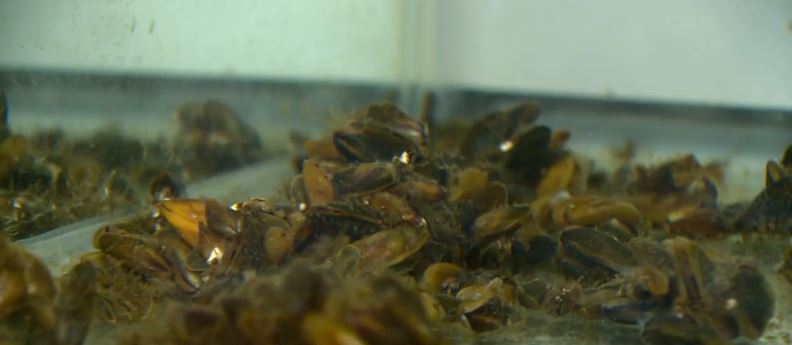Scientist in Davis working to create solution to invasive Golden Mussels

By Peyton Headlee
Click here for updates on this story
SACRAMENTO COUNTY, California (KCRA) — The Sacramento-San Joaquin Delta, spanning 1,100 square miles, is a vital hub for California’s water supply.
At the Skinner Fish Facility near Byron, water for 27 million Californians and hundreds of thousands of acres of farmland passes through the systems.
Their louvers ensure fish don’t make it into the water pumps, but those protection efforts are being undermined. Early this year, golden mussels began clogging the system.
“They have the ability to completely close that off,” Trent Schaffer, civil maintenance branch manager for the Department of Water Resources Delta Field Division, said.
Schaffer said golden mussels have increased maintenance at the facility fourfold, requiring weekly cleanings instead of monthly. Still, the golden mussels hold on and continue to spread.
“What we currently have is not enough. We do know that,” Schaffer said.
Tanya Veldhuizen is an Environmental Program Manager for DWR and leads their Invasive Mussel Program. She said golden mussels are affecting their facilities across the state.
“It is overwhelming when I think about the scale of the problem for the state water project,” Veldhuizen said.
They have teams working around the clock, testing treatments and taking samples in their golden mussel mobile lab at the facility. They’re looking at all potential solutions—one of which might come from a lab a little further north in Yolo County.
Pam Marrone, cofounder of the Invasive Species Corporation, has studied invasive species extensively. Earlier this year, she was inducted into the National Inventors Hall of Fame.
“Invasive species are amazing. They’re horrible, but they’re also amazing in that they’re genetically built to invade quickly and have really high reproductive rates,” Marrone said. “There’s a real opportunity to find safer biological solutions for these types of pests.”
Already, she’s created a product that kills Quagga and Zebra mussels. Zequanox is being used across the country.
In the last few months, her team has been experimenting with Zequanox and found it can kill golden mussels, but not at as high a rate as they would like.
“We take some of these natural collected mussels and we put them into jars, which is behind me. And then we add the product and for about a week, we expose them to it for 24 hours,” Marrone said. “Then, we keep looking at the number of mussels that die over the week. So now we’re working out the dose rate on different feeding strategies to see how it would be used in a practical setting.”
She said golden mussels are much tougher to kill than Quagga and Zebra mussels. Her team continues to work on fine-tuning the product to better impact golden mussels.
“Unfortunately, once they’re invaded in a big way like they are, it’s not going back to normal. That’s why prevention is so much better than management,” Marrone said. “They’re so widely colonized now, it’s really going to be hard to eradicate them. So, the key here is to prevent them from spreading any further.”
Marrone hopes to have the second generation of Zequanox ready by next year.
Golden Mussels were first found in the Sacramento-San Joquin Delta in October. Officials said the invasive species poses a significant threat to the ecological health water in the state, infrastructure, and water quality.
Earlier this year, several lakes across Northern California were closed to boaters as officials worked to stop the spread of the species.
Please note: This content carries a strict local market embargo. If you share the same market as the contributor of this article, you may not use it on any platform.
